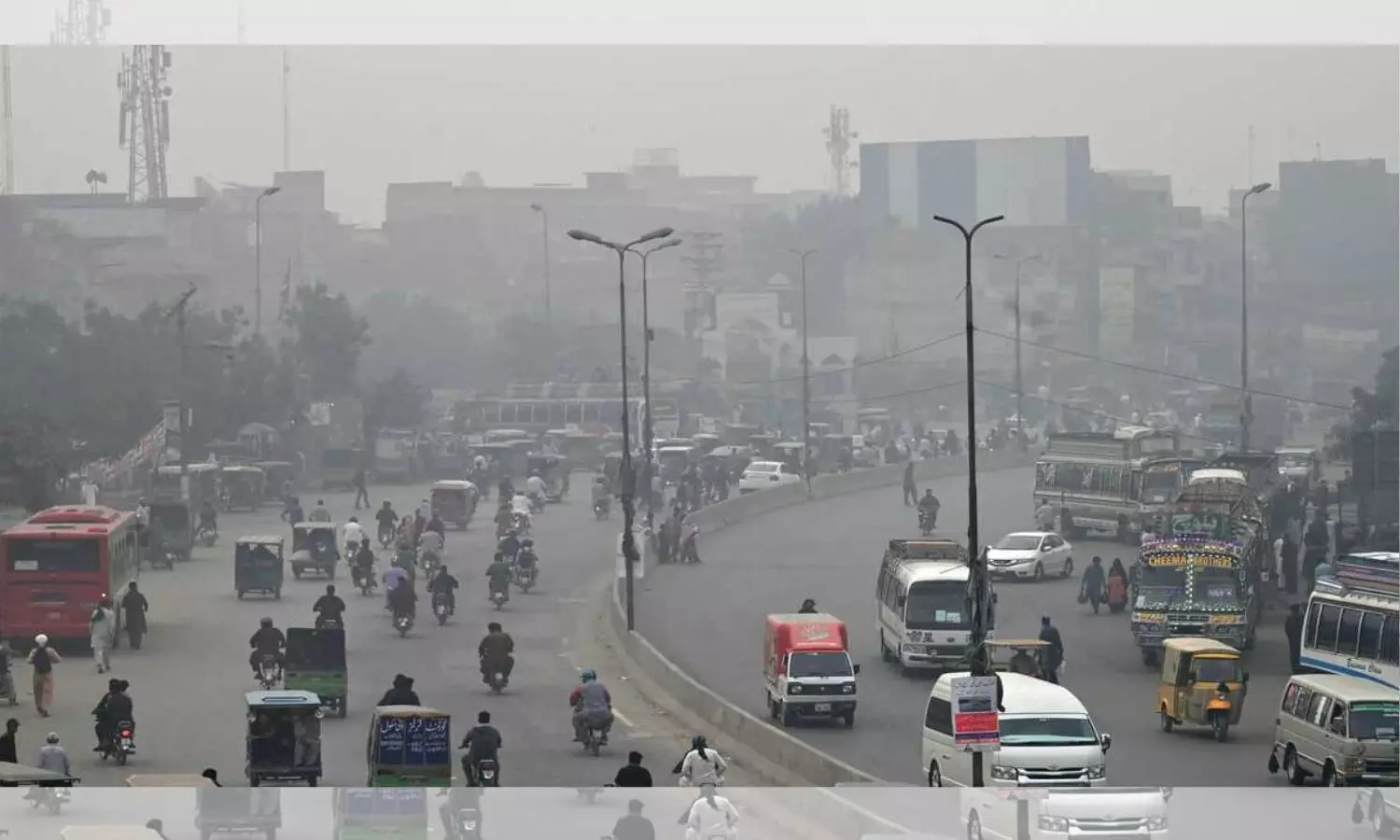The alarming rise in Lahore’s air quality index highlights a critical health crisis that demands urgent action from authorities and residents alike. Air pollution has become an increasingly pressing issue globally, with several cities struggling to maintain acceptable air quality standards.
Among these, Lahore, Pakistan, has recently gained notoriety for its alarming air quality index (AQI) readings. The city’s AQI reached an unprecedented 690 on a Sunday, marking it as the most polluted city in the world, according to global monitoring sites.
The Alarming Rise of Lahore’s AQI
As the air quality deteriorates, Lahore’s citizens are confronted with a harsh reality that threatens their health and well-being. An AQI of 690 is categorized as “hazardous,” indicating that the air is not safe for anyone, especially vulnerable groups such as children, the elderly, and individuals with pre-existing health conditions.
The Air Quality Index is a crucial tool used to gauge air pollution levels, with higher values representing a greater health risk. An AQI above 300 is considered hazardous, and Lahore’s current level far exceeds this threshold.
The factors contributing to this drastic rise in AQI are multifaceted. Seasonal changes play a significant role, as winter conditions can exacerbate pollution levels. During this season, cooler temperatures cause air to become denser, allowing harmful pollutants to settle closer to the ground.
Read : Pakistan Ranked Third-Worst Nation in Terms of Order and Security
This results in a thick layer of smog that envelops the city, significantly reducing visibility and increasing health risks. The prevalent pollutants include particulate matter, carbon monoxide, and volatile organic compounds, primarily emitted from vehicles, industrial activities, and the burning of waste.
One of the most critical contributors to Lahore’s air pollution is the burning of crop residues in nearby agricultural areas. Farmers often resort to this practice to clear fields quickly after harvest, releasing large amounts of smoke and particulate matter into the atmosphere.
Read : Pakistani Man Sent to Mental Hospital for Trying to Open Gay Club
This, combined with emissions from factories and vehicles, creates a toxic mix that plagues the city’s air quality. Additionally, other sources of pollution include the burning of coal, garbage, oil, and tires, all of which are common practices in the region.
Health Risks Associated with Poor Air Quality
The implications of Lahore’s hazardous air quality extend far beyond mere discomfort; they pose significant health risks to the city’s residents. Health authorities have already reported a marked increase in respiratory issues among the population, with symptoms such as coughs, sore throats, and viral flu becoming increasingly common.
The World Health Organization (WHO) has long established a link between poor air quality and various health problems, ranging from minor irritations to serious conditions like asthma, lung cancer, and cardiovascular diseases.
With the AQI reaching such alarming levels, health experts have issued urgent recommendations to protect residents. Authorities advise individuals to avoid outdoor activities, particularly exercise, as physical exertion in polluted air can exacerbate health issues.
Keeping windows closed is also crucial to prevent polluted air from entering homes. The use of masks and goggles has become a necessary precaution when venturing outside, providing a layer of protection against harmful particles.
Moreover, the use of air purifiers indoors is highly recommended to improve air quality within homes. These devices can significantly reduce indoor pollution levels, helping to create a safer environment for families. Residents are urged to take these recommendations seriously to mitigate the immediate health risks posed by Lahore’s toxic air.
Long-Term Environmental Implications
The persistent air pollution in Lahore raises serious concerns about its long-term effects on the environment and public health. As air quality continues to deteriorate, the consequences may extend beyond respiratory problems, potentially impacting cognitive function, overall health, and quality of life.
Vulnerable populations, including children and the elderly, are at the highest risk of suffering from long-term health issues resulting from prolonged exposure to polluted air.
In addition to the health implications, the environmental impact of such pollution is significant. Poor air quality contributes to climate change, as certain pollutants, like carbon dioxide and methane, trap heat in the atmosphere. Lahore’s struggle with air pollution is emblematic of a broader environmental crisis facing many urban centers globally.
The interconnected nature of air quality and climate change necessitates urgent action and collaboration among government officials, environmental organizations, and citizens.

To combat the ongoing crisis, a multi-faceted approach is essential. Authorities must implement stricter regulations on industrial emissions and promote the use of cleaner energy sources. Public awareness campaigns can educate residents about the importance of reducing pollution and adopting sustainable practices.
Additionally, enhancing public transportation options can decrease the reliance on personal vehicles, contributing to improved air quality.
The challenges presented by Lahore’s air pollution crisis are daunting, but with collective action and a commitment to change, the city can work towards a healthier future. The situation serves as a wake-up call for citizens and authorities alike, emphasizing the urgent need to prioritize air quality and public health.
As Lahore grapples with this environmental crisis, it is essential for individuals to remain informed and proactive. By adopting healthier habits and advocating for better air quality measures, residents can contribute to a cleaner and safer environment for themselves and future generations. The time for action is now, as the consequences of inaction can be dire for both health and the environment.
Lahore’s current air quality crisis is a stark reminder of the broader issues facing many urban areas worldwide. As the city battles against an AQI that has reached unprecedented levels, it is crucial for all stakeholders to come together and take meaningful steps towards improvement.
The health and well-being of the population depend on it, and the potential for a cleaner, healthier Lahore is within reach if the necessary actions are taken.
let’s enjoy few years on earth with peace and happiness….✍🏼🙏

